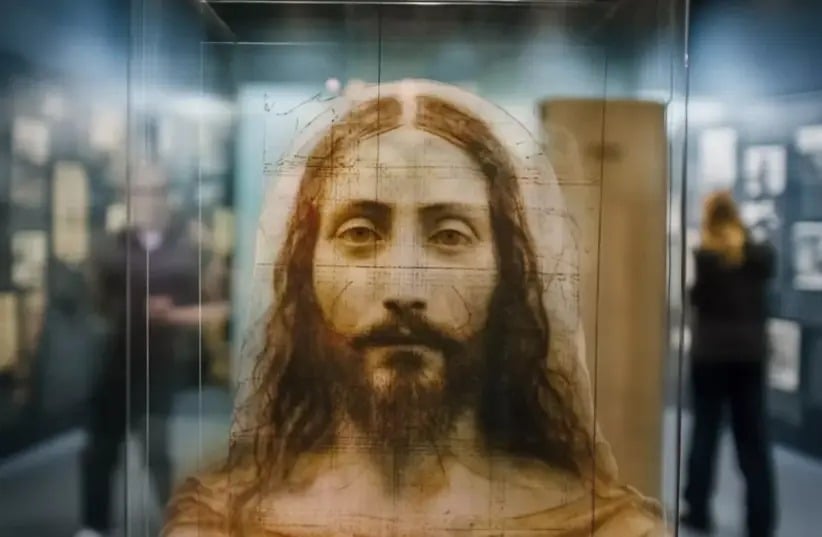
Artificial intelligence (AI) has employed the Shroud of Turin, a significant Catholic artifact, to create a realistic representation of what Jesus might have looked like.
The Shroud of Turin is a 14-foot-long linen cloth that has a faint image of a man on both its front and back sides. It holds great religious importance as a holy artifact for the Catholic Church.
Many people within the Church believe that it was the actual burial cloth that was used to wrap the body of Jesus of Nazareth after he was crucified.

AI-generated image of Jesus
The image of the man on the shroud is thought to be a miraculous imprint of Jesus. Thanks to AI technology, this image can be used to create a realistic portrayal of what Jesus may have looked like.
The AI-generated image depicts a man with long hair and a beard. His eyes are open, and he’s gazing straight ahead. We can see the upper part of his body, and he’s dressed in what seems to be a basic tunic.
The history of the Shroud of Turin is intricate, shrouded in mystery and surrounded by controversy.
Shroud of Turin
Before the 14th century, there were many accounts of what could be Jesus’ burial shroud or an image of his head being revered in different parts of Europe. However, there isn’t solid historical proof to confirm that any of these were indeed the Shroud of Turin.
There was a burial cloth, which some historians believe could have been the shroud. It was once in the possession of the Byzantine emperors but disappeared during the sack of Constantinople in 1204.
Historians have mentioned that the Order of the Knights Templar did have a relic that displayed the image of a bearded man on either linen or cotton.
Custody of the shroud
The documented history of the shroud began in 1353, when it was exhibited at a church in Lirey, France. The Bishop of Troyes, Pierre d’Arcis, who had authority over the Lirey church, declared the shroud to be a fraud.
In 1390, the bishop sent a letter to Pope Clement VII, asserting that the shroud was a skillfully made fake intended to collect money from the faithful who visited to view the relic.
In 1453, the House of Savoy became the owner of the shroud. Unfortunately, in 1532, a fire in a chapel in Chambéry, the capital of Savoy, caused damage to the shroud. Nuns from the Order of Saint Clare tried to mend it by adding patches.
In 1578, the Duke of Savoy relocated the shroud from Chambéry to Turin, a city in Northern Italy, and it has remained there since. It is kept in the Chapel of the Holy Shroud at Turin Cathedral.
See all the latest news from Greece and the world at Greekreporter.com. Contact our newsroom to report an update or send your story, photos and videos. Follow GR on Google News and subscribe here to our daily email!



